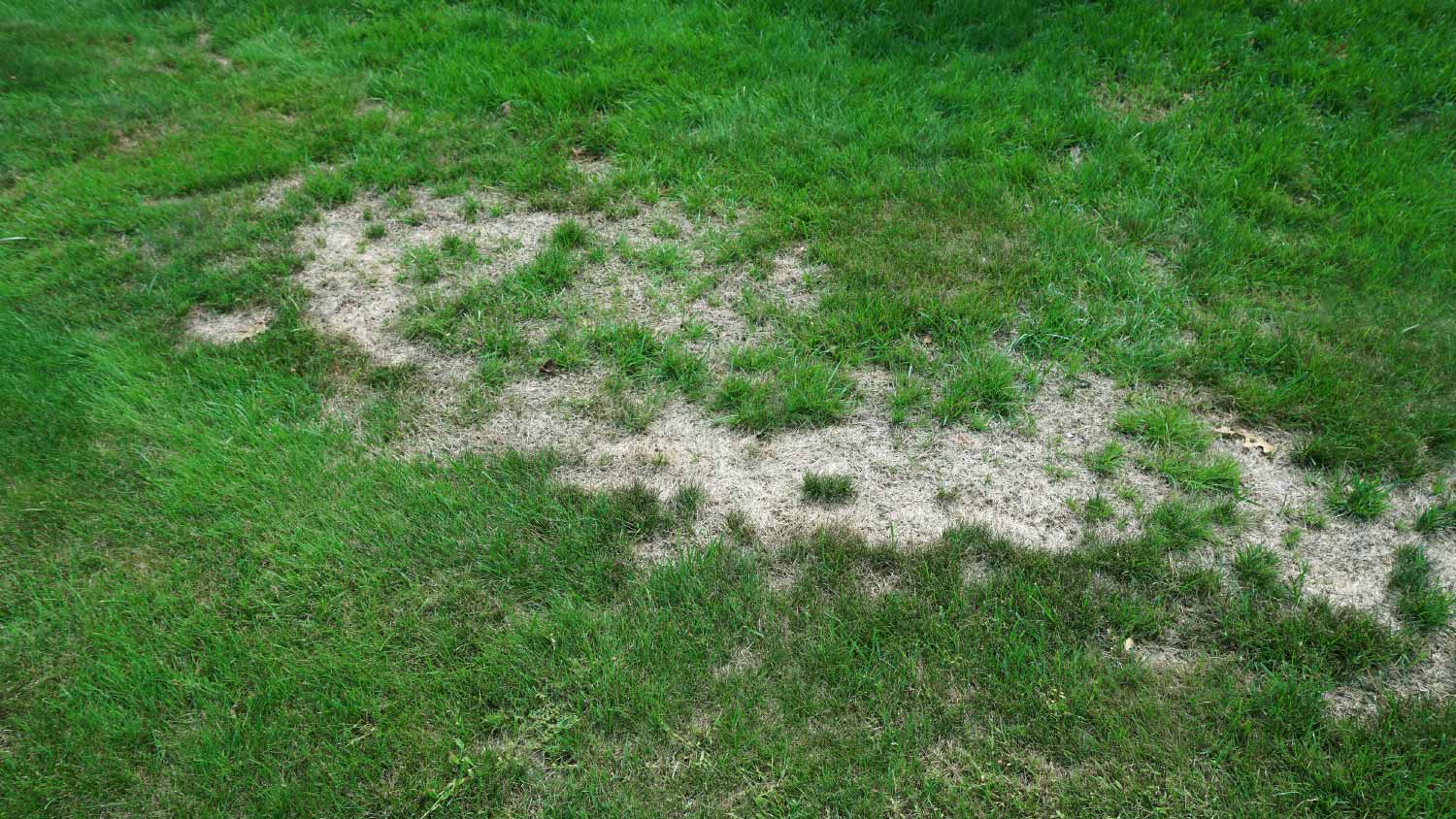
Discover the cost to fertilize your lawn, including average prices, key factors, and tips to help homeowners budget for a lush, healthy yard.
Fix your white grass and move on to greener pastures


Fungus like powdery mildew can cause grass to turn white.
Applying too much fertilizer can cause grass to turn white.
Stress can cause grass to turn white.
If you notice white patches on your grass or if your whole lawn is affected, you’re likely wondering why your grass is turning white. Grass can turn white because of too much moisture, not enough moisture, or too much fertilizer. Luckily, there are some steps to take to prevent your grass from going white and restore damaged areas. Whether you decide to hire a local lawn care pro or use a DIY solution, here are the top three causes of white grass and how to fix them.
If your white-colored grass has a dusty, grayish appearance, your culprit is likely powdery mildew. This fungus thrives in areas with obstructed sunlight, where moisture might linger. Don’t confuse this fungus with snow mold, which has a similar coloring but appears as webbing in the grass. Since powdery mildew spreads by spores, it can easily occur in any area of your lawn with good growing conditions, but luckily it’s not particularly invasive.
To prevent powdery mildew, ensure your lawn gets as much direct sunlight as possible. Prune trees and shrubs back to allow as much sunlight as possible. You can also choose to plant grasses that are more shade tolerant and less susceptible to powdery mildew, such as fine fescues and shade-resistant bluegrasses, in areas of your yard that are shadier and damper.
If you have a powdery mildew problem in your grass, avoid mowing the affected area until it recovers to avoid spreading the fungus to other parts of your lawn. Ensure your lawn has ample drainage to allow the area to dry out thoroughly. When you water your lawn, make sure to water for a longer period of time but less frequently, about once every three days, rather than light, daily watering. This will improve your grass’ root health and limit the spread of powdery mildew.
If you have recently fertilized your lawn, chances are that the white coloring on the grass blades is residue from too much fertilizer. This type of white grass will look like it has a crusty build-up, which is caused by fertilizer granules dissolving with water and redepositing on the grass in crystalized form.
To resolve the results of overfertilization, clean up any chunks of fertilizer and then water your grass heavily until water stops soaking into the soil. Avoid mowing for a few days while the grass recovers, and if needed, aerate your lawn to reduce surface moisture and stimulate root growth.

Your white or grayish grass could be the result of stress to the plants. This situation is likely the result of mowing your grass too short, very hot and dry weather, or other adverse conditions. To help resolve this scenario, make sure to aerate your lawn, water deeply, and avoid cutting more than one-third of the height of the grass blades. These steps will help stressed grass recover and return to its normal, green color. For help restoring grass to its natural state, consider hiring a lawn treatment professional to resolve issues from powdery mildew, overfertilization, or sick grass.
From average costs to expert advice, get all the answers you need to get your job done.

Discover the cost to fertilize your lawn, including average prices, key factors, and tips to help homeowners budget for a lush, healthy yard.

Discover average lawn aeration cost, key price factors, and tips to save. Get a clear estimate for your yard and learn how to choose between DIY and hiring a pro.

Get transparent power seeding cost info to learn what impacts pricing, how to save, and whether to DIY or hire a pro for your lawn’s best results.

When your grass keeps dying where a tree used to be, it’s likely because there is a nutrient deficit in the soil in that area. Here’s how to fix it.

When it comes to drop spreaders versus broadcast spreaders, knowing the differences between them will help you make the right choice for your outdoor setup.

If you’re looking to apply fertilizer to your lawn, there are a few things you need to get right first. Make sure you’re ready to answer these lawn fertilizer questions before you start.